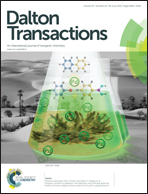Ni2+ chemistry in pathogens – a possible target for eradication
Abstract
The survival of all urease and/or hydrogenase containing pathogens depends on the proper homeostasis of nickel. In the scope of this perspectives paper, details of Ni2+ metabolism of Helicobacter pylori, a widespread stomach-ulcer causing bacterium, are described. Nickel binding proteins and thermodynamics of such metal complexes are discussed in detail and special focus is given to potential nickel binding sequences in this metal's chaperones and regulators. A list of potential Ni2+ binding sites in various pathogens is presented, which points out numerous examples of nickel interactions that still need to be understood.


 Please wait while we load your content...
Please wait while we load your content...